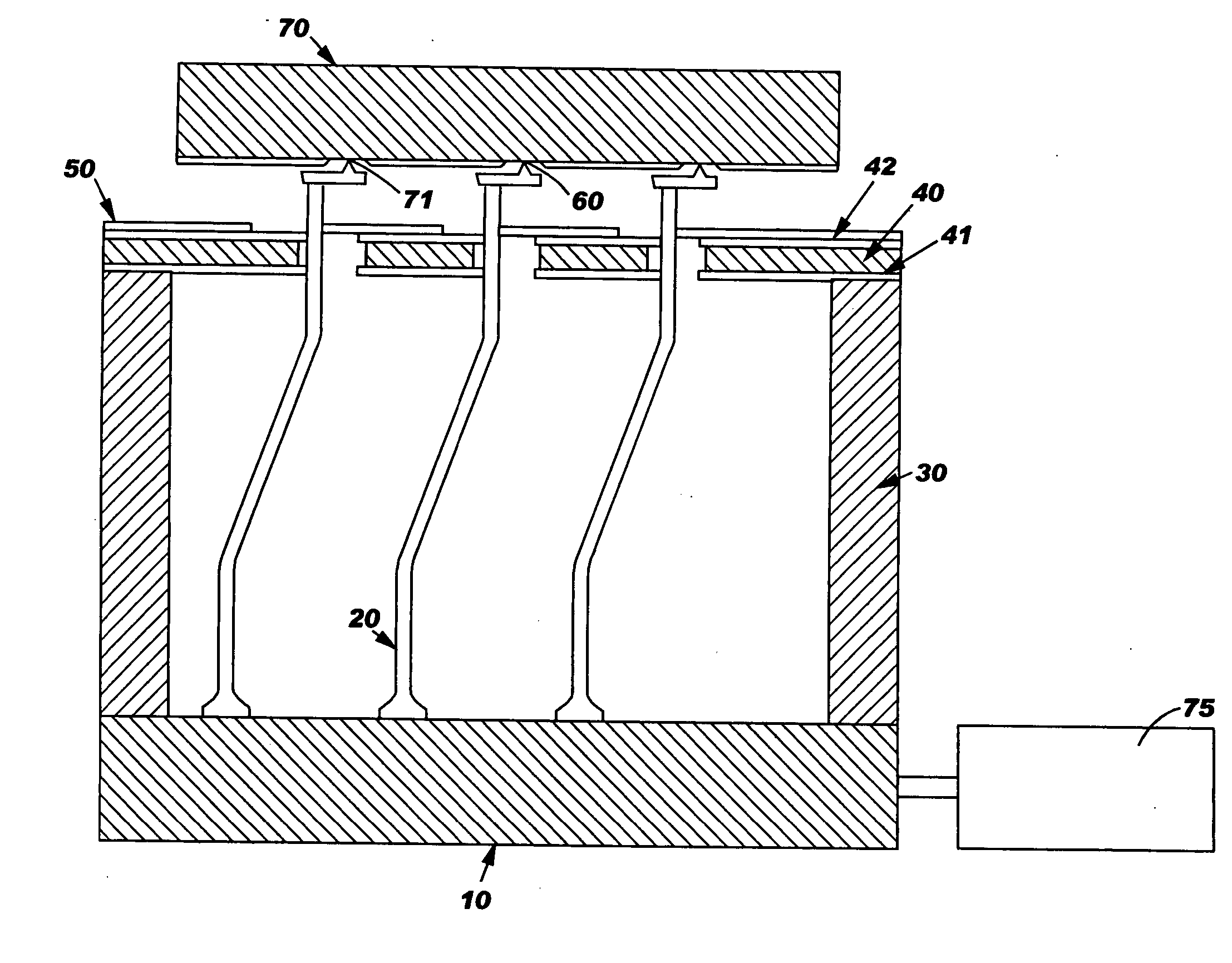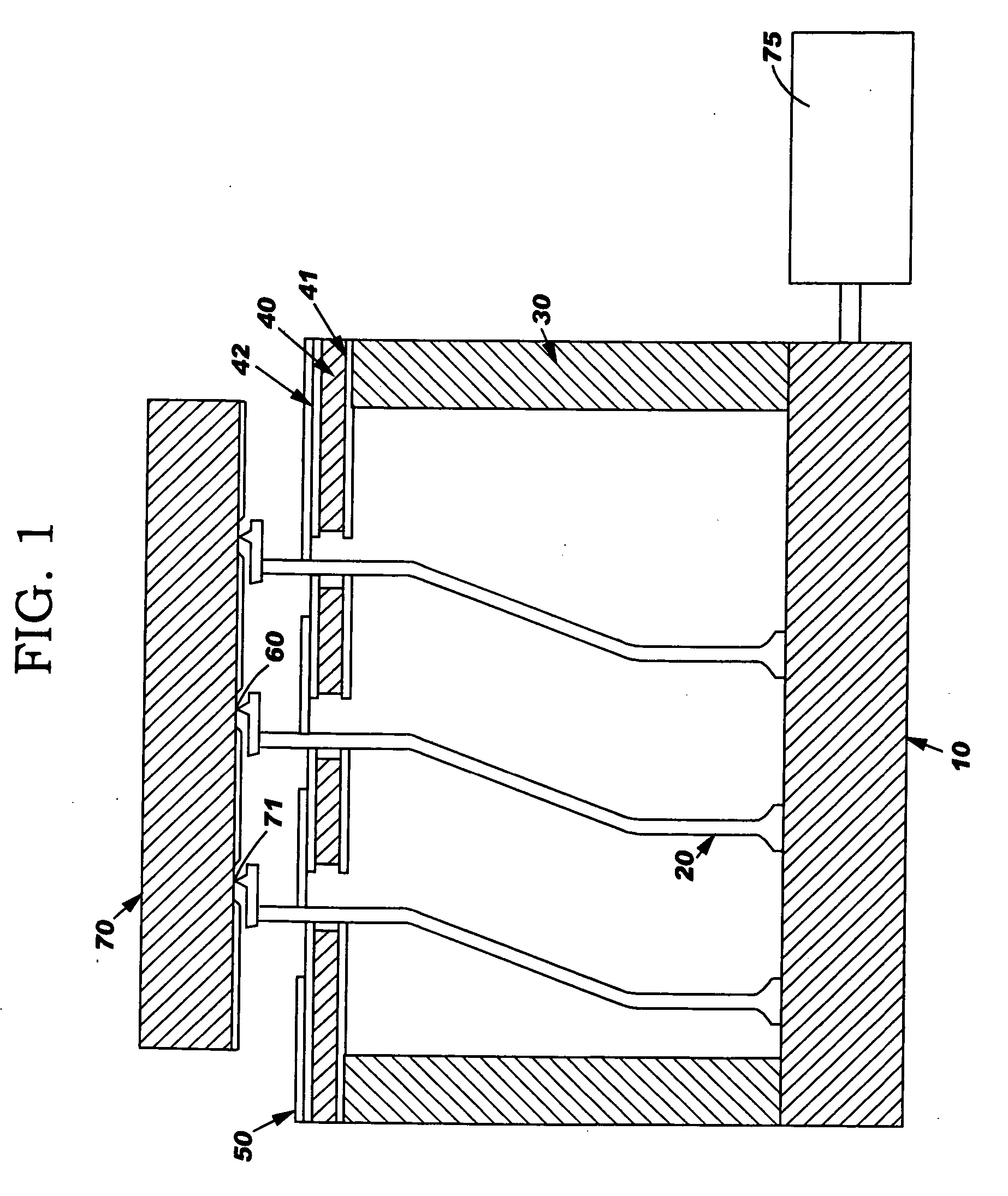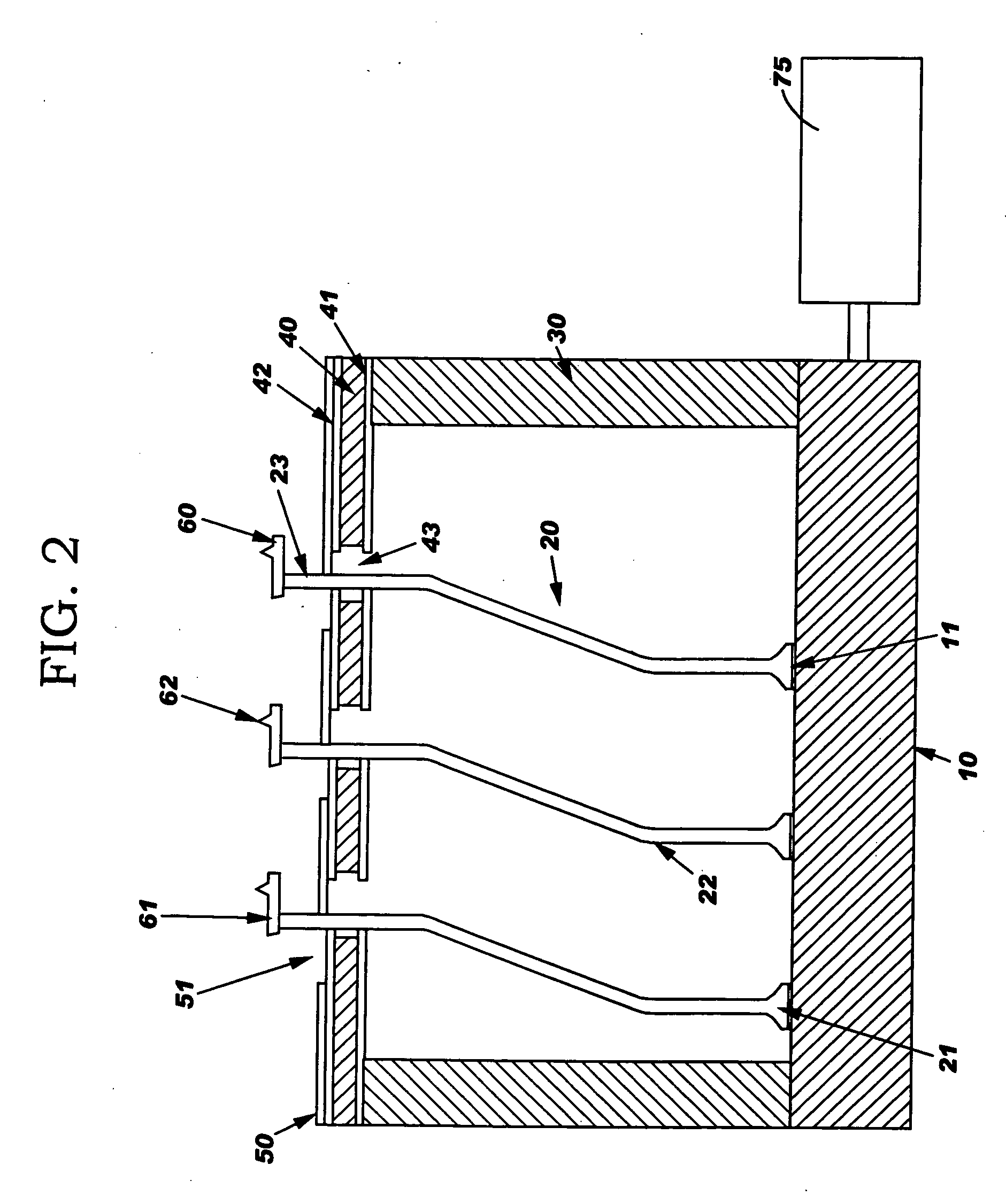Electrical connector design and contact geometry and method of use thereof and methods of fabrication thereof
a technology of electrical connectors and contact surfaces, applied in the direction of coupling device details, coupling device connections, instruments, etc., can solve the problems of excessive force that must be applied to the electronic structure of the tip, the surface of the electrical contact locations on the contact surface may be too large to avoid damage to the electronic structure, etc., to achieve the effect of improving the electrical interconnection structure, high durability and reliability, and not easy to oxidiz
- Summary
- Abstract
- Description
- Claims
- Application Information
AI Technical Summary
Benefits of technology
Problems solved by technology
Method used
Image
Examples
Embodiment Construction
[0028] The present invention and the various features and advantageous details thereof are explained more fully with reference to the nonlimiting embodiments that are illustrated in the accompanying drawings and detailed in the following description. It should be noted that the features illustrated in the drawings are not necessarily drawn to scale. Descriptions of well-known components and processing techniques are omitted so as to not unnecessarily obscure the present invention. The examples used herein are intended merely to facilitate an understanding of ways in which the invention may be practiced and to further enable those of skill in the art to practice the invention. Accordingly, the examples should not be construed as limiting the scope of the invention.
[0029] While many examples discussed below relate to test probes used with a testing device, one ordinarily skilled in the art would readily understand that this is only one example in which the invention finds application...
PUM
 Login to View More
Login to View More Abstract
Description
Claims
Application Information
 Login to View More
Login to View More - R&D
- Intellectual Property
- Life Sciences
- Materials
- Tech Scout
- Unparalleled Data Quality
- Higher Quality Content
- 60% Fewer Hallucinations
Browse by: Latest US Patents, China's latest patents, Technical Efficacy Thesaurus, Application Domain, Technology Topic, Popular Technical Reports.
© 2025 PatSnap. All rights reserved.Legal|Privacy policy|Modern Slavery Act Transparency Statement|Sitemap|About US| Contact US: help@patsnap.com



